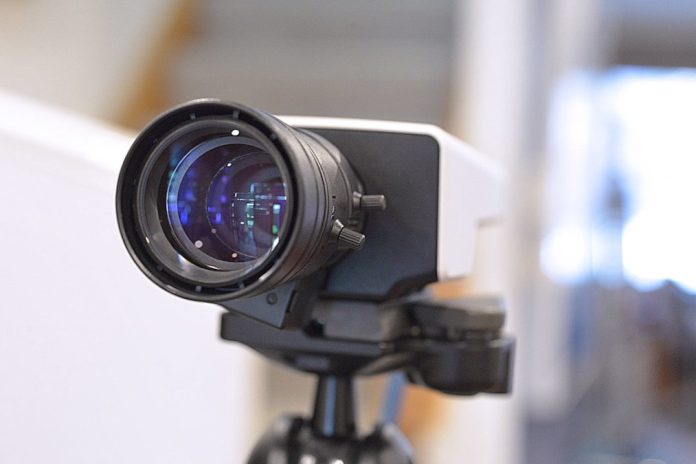Want to convert a low cost 1080p network camera into a pixel monster with the optical power and image quality to scare off the best integrated camera systems on the planet? All you need is a thoughtful angle of view and 130 bucks.
Fujinon 15-50mm F1.5 Review
Fujinon 15-50mm F1.5 – CCTV lenses are so easy. Find the hyperfocal distance on the kit lens that came with your low cost HD camera, fiddle with zoom and focus, tighten the drag screws, mount the camera on a wall and hurrah! ‘Crystal clear image streams with an angle of view of 100 degrees’, right? Well – that’s actually complete bollocks. Outside your scene’s centre and any deeper than about 10 metres in good light you’re going to give the customer what everyone politely calls situational awareness.
What they mean by this is soft and distorted camera views complete with CAs, that embrace everything your client doesn’t need to see. Walls, sky, trees, fences, powerlines, ceilings, signage, floors – a waterfall of noise that distracts the eye and ensure snapshots of faces and license plates will never be admissible in court.
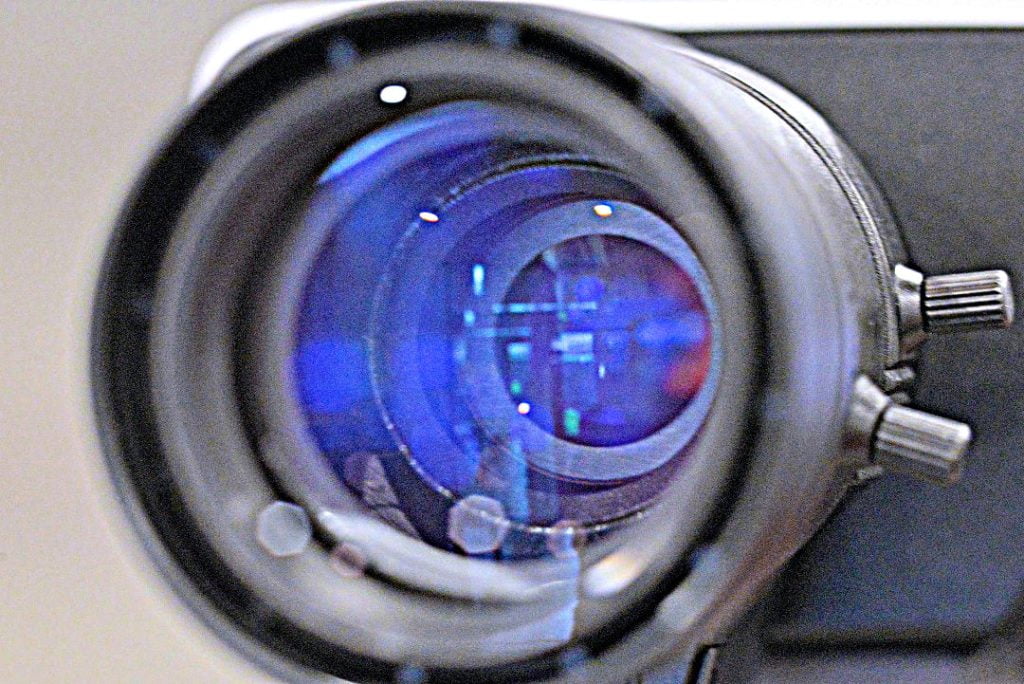
But there’s a way to turn your $A250 1080p camera into a raging pixel monster capable of excellent face recognition and tight situational awareness at 15 metres, and able to peer 2000 metres into scenes, giving detail and depth of field that’ll knock your client’s socks off. It’s all about lens choice and I don’t mean selecting lenses costing vast sums of money. Not much more than $A130 will change the nature of a low cost CCTV camera. Performance won’t just be a little better, it’ll take the capability of your customer’s CCTV solution to a whole new level.
Fujinon 15-50mm F1.5-Performance
In this review, we’re going to partner Fujinon’s 15-50mm F1.5 varifocal 1/2.7-inch MP lens with an entry-level full-body network camera and see whether there’s any improvement in operational performance. When it comes to specifications, the Fujinon 15-50 is IR-corrected for low-light cameras and features DC-iris and CS-mount. This is not a large, heavy lens but packs in 3.3x telephoto and incorporates Fujinon’s Aspherical Technology – low-dispersion glass with a high-reflective index.
Thanks to quality glass and good coatings on multiple elements, the Fujinon 15-50 offers sharper images with less internal reflection, better contrast and colour rendition, and overall higher optical performance. At least that’s what it says on the tin.
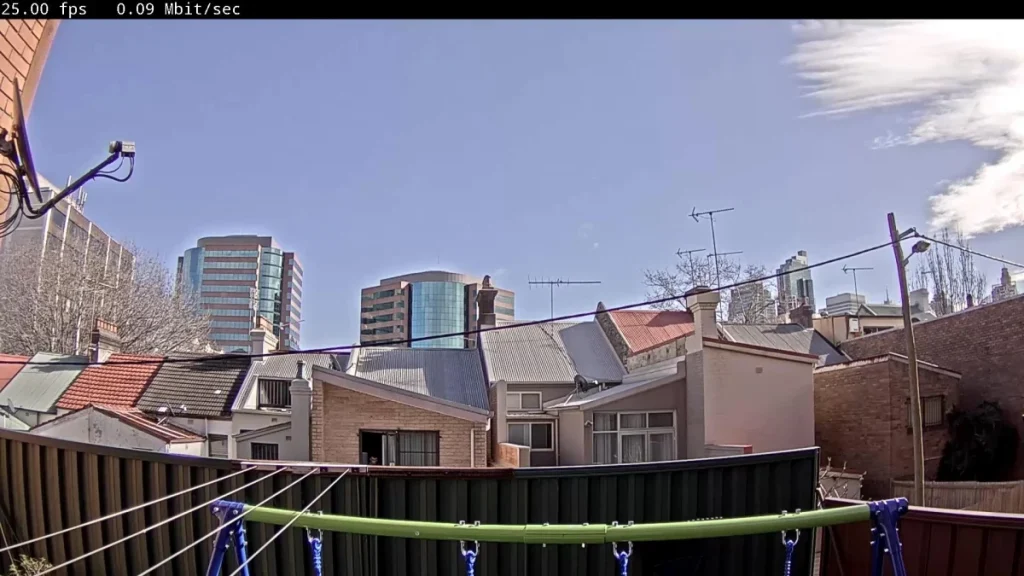
We’re going to test the lens using a camera readers have met before – the compact Axis M1125, which is the only camera in our stable right now with a sensor small enough to avoid vignetting with this 1/2.7-inch Fujinon lens. The M1125’s sensor is a progressive scan ½.8-inch CMOS with a maximum resolution of 1080p HD (1920 x 1080) and a frame rate of 25fps in H.264 and MJPEG. Zipstream is available in H.264 and I run it on the highest (lowest image quality) setting the whole test, only switching Zipstream to a low setting later on to check the impact on bitrate.
In our earlier test, the M1125 with 120dB WDR did well in strong backlight. Minimum scene illumination with this camera is claimed to be 0.25 lux in colour and 0.05 lux in monochrome but we won’t be going more than a shade under 2-lux at the lens.
The nice thing about using this camera is the fact we’ve got images from our earlier test using the Ricom 3-10.5mm f1.4 varifocal kit lens for comparison. What will our findings show? From a material point of view, CCTV lenses like this aren’t a deep subject. Swapping out the lens takes all of half a minute – I replace the Ricom lens, plug in the auto iris cable and adjust the Fujinon lens for 50mm by targeting trees down on Belmore St while running back and forth from tripod to workstation monitor. This part does take a while as long focal lengths are exacting. Phew.
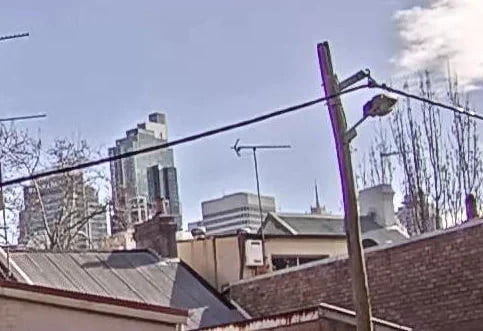
Fujinon 15-50mm F1.5-Wider View
In the earlier test we ran the Ricom at 3mm to view the district and then 5mm to view the lane. In the wider angle views from the earlier test, I could see the skyline of the city but detail was smudgy and there was considerable chromatic aberration throughout the scene. Today, as soon as I place and adjust the camera’s angle of view I get a big surprise. The Fujinon 15-50mm lens has turned this affordable little network camera into a video surveillance weapon.
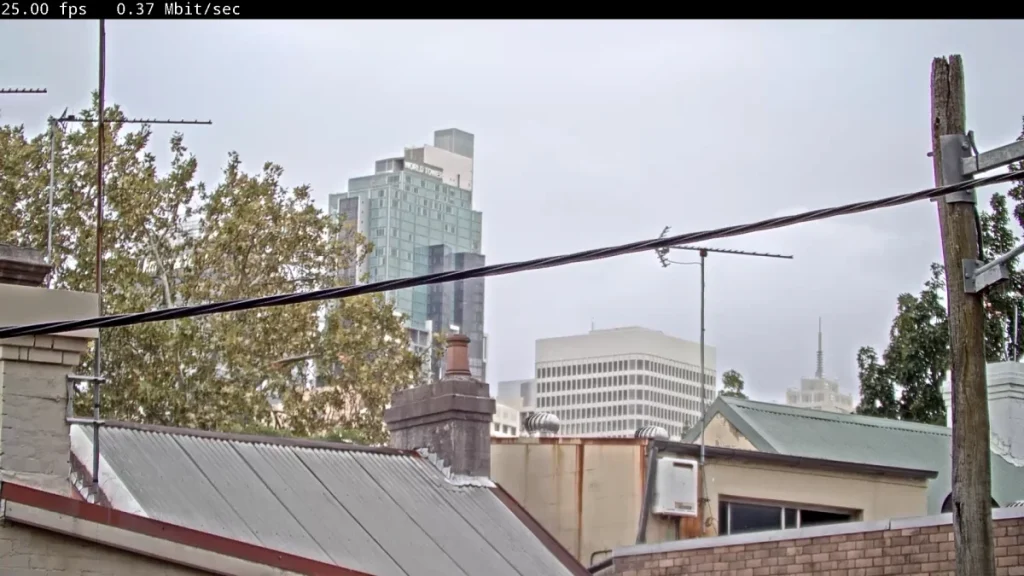
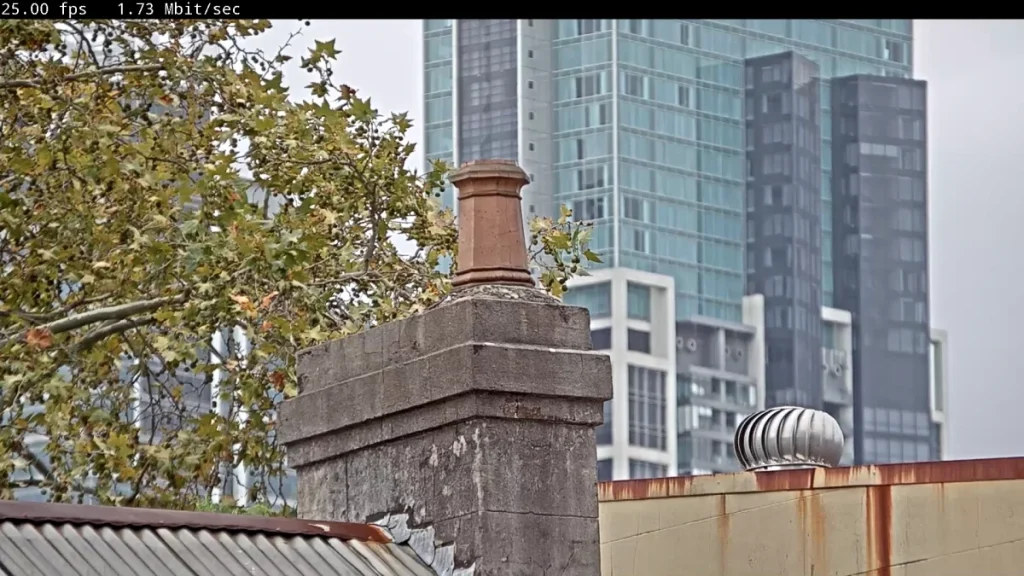
I have extreme detail of a chimney pot and branches at 35-40m along with excellent detail of World Square at 1000m. It’s the best view of both parts of our district view I’ve ever had. Below I’ve attached a low res reference image from a Nikon D610 with a 300mm AFS and 1.4x extender – that’s 420mm at f/5.6 handheld. Not bad performance from the Axis M1125, is it?
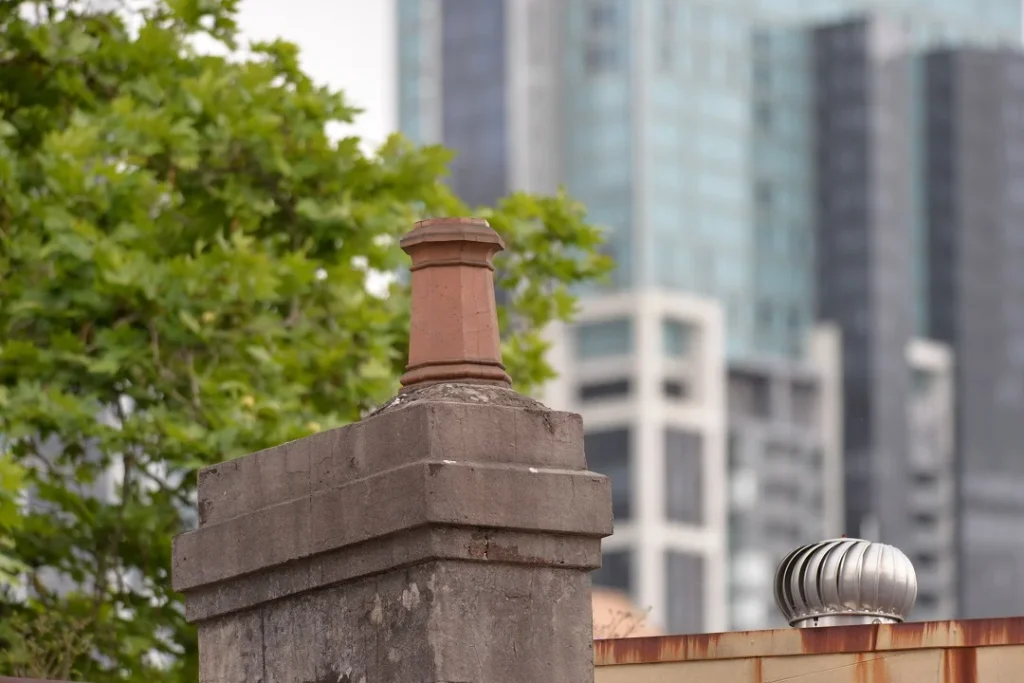
This camera and lens combination also give me the best view of Sydney’s Centrepoint Tower at nearly 2000m, as well as the best view of the Memocorp building at close to 1000m. Flaring? No, Ghosting? No. Chromatic aberrations? No. Distortion? No.
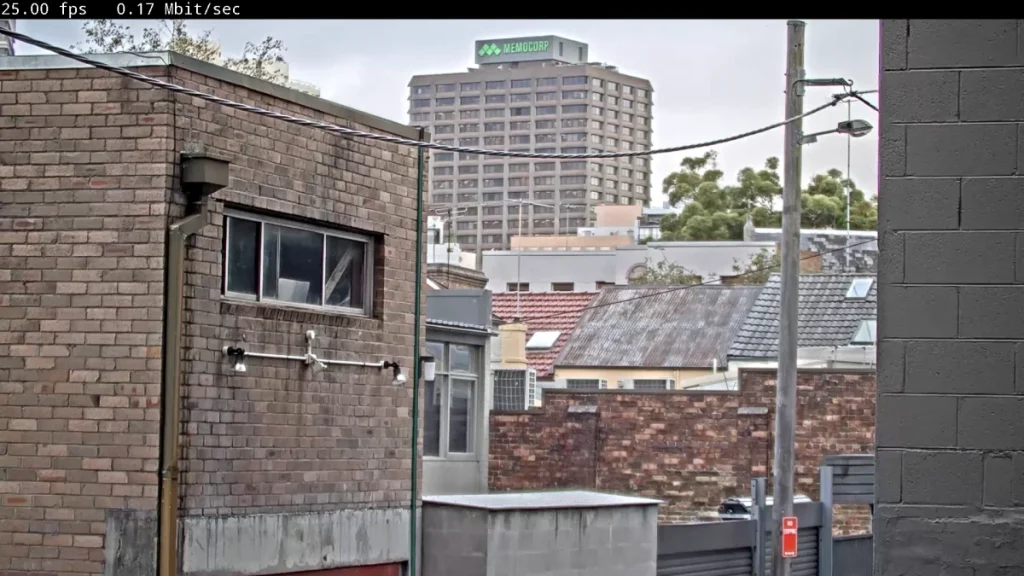
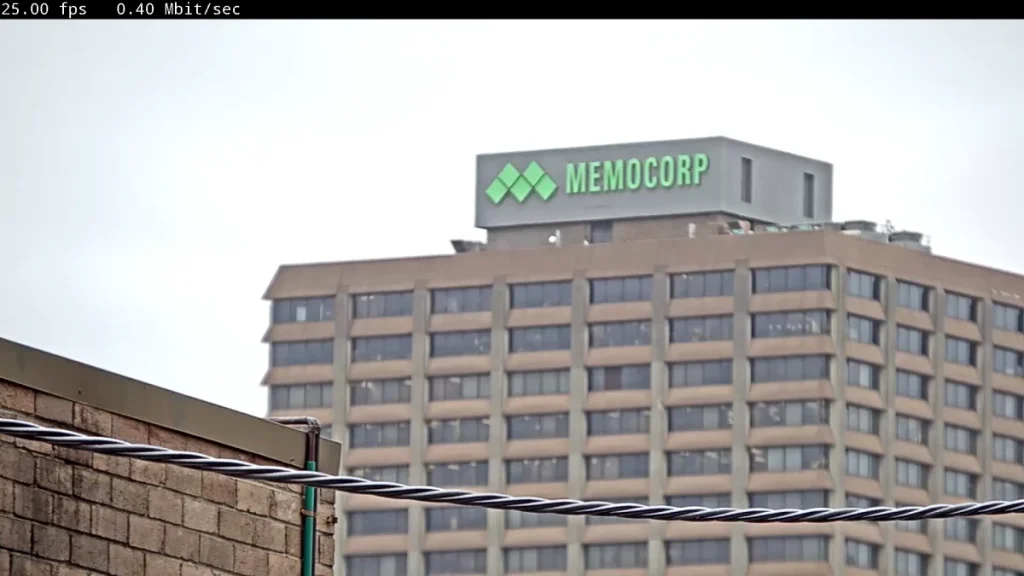
On a grey and glary afternoon colour rendition remains high. Something I was on the lookout for with this lens was reduced depth of field at the long end and it’s true that if the lens is focused on objects close up at a focal length of 50mm there’s background and/or foreground blur. But when the camera is set close to infinity viewing objects 25m or more away, depth of field yawns out behind your subject, seemingly forever.
Fujinon 15-50mm F1.5-Face Recognition
“There’s a way to turn your $A250 1080p camera into a raging pixel monster capable of excellent face recognition and tight situational awareness at 15 metres, and able to peer 2000 metres into scenes, giving detail and depth of field that’ll knock your client’s socks off”
A focal length of 50mm is not what users think they’ll ever need but don’t underestimate its power in serious applications – not just externally but internally as well. Before I change the focal length, I put Norman out the back in 75,000 lux backlight and positioning the camera about 15m from his face, I tweak focus. The quality of face recognition at this distance using a 50mm focal length is superb.
It’s not for every application, given depth of field is reduced, but long focal lengths allow discreet and perfect facial identification without the need to cable right up to an entry/choke point that gives an opportunity for identification. Let’s compare my findings starting with the Ricom crop, then moving on to the Fujinon – first at 15mm and then at 50mm…
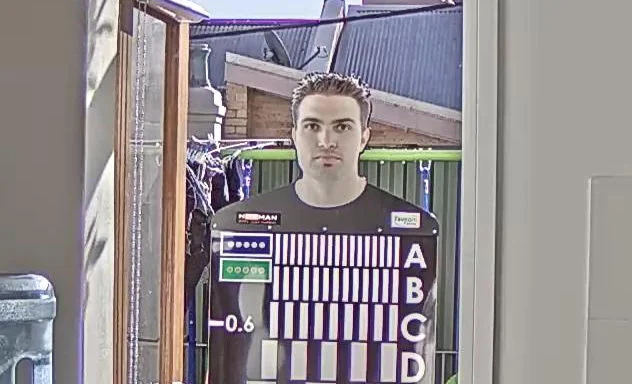
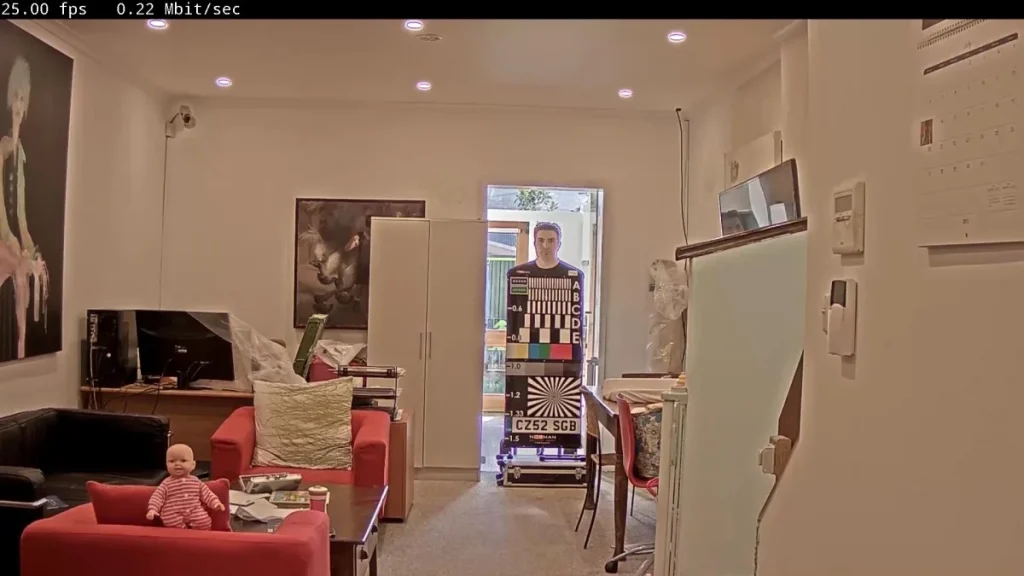
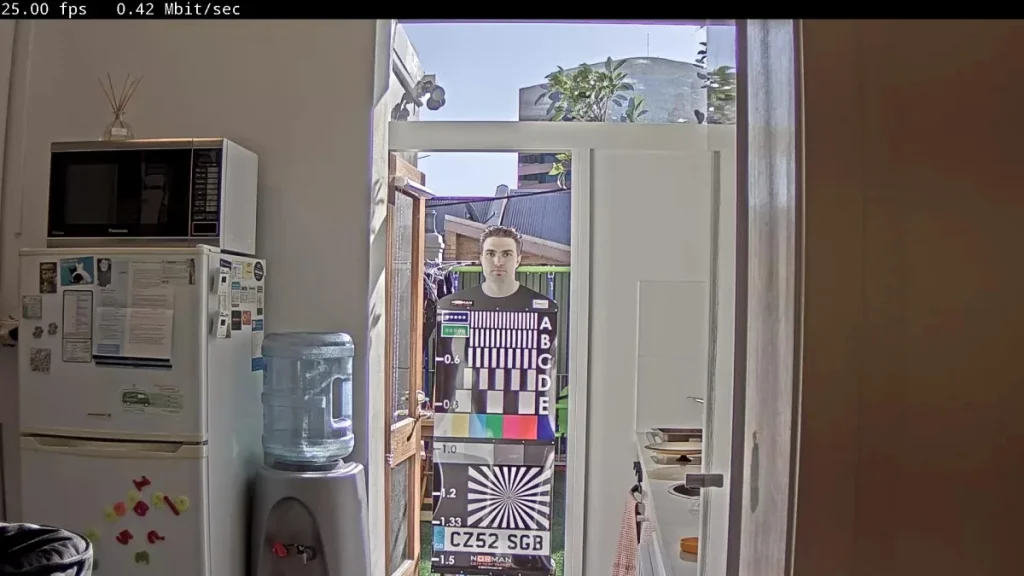
Fujinon 15-50mm F1.5-Something I note is that the images with the Fujinon at 50mm are slightly higher key than those at 15mm and I put this down to the M1125’s digital response to a reduction in light hitting the sensor as aperture closes at full tele. The camera also looks to be exposing for the external light level at the longer focal length. The image above is a crop and the foreground at the longer focal length is darker, too.
Regardless, it’s great face recognition. More than any other image here, this snapshot of Norman 15 metres from the lens of a very low cost camera shows the power of thoughtful lens choice based firmly on operational requirements. A surveillance camera is not a disposable piece of ubiquitous network crap after all, security people.
Something to note in the snapshots above is the complex lateral and longitudinal chromatic aberrations in the first image – see that fringing around all the high contrast areas? Yeah, that purple stuff. Chromatic aberrations soften detail when you zoom digitally. Bad CAs might be 10 pixels deep. When you are trying to dredge face recognition out of a solution that had an inadequate specification to begin with, CAs are the death of court admissible face recognition deeper into scenes.
I moan a lot about CAs because I see them in most every camera I test. Now, look at the performance of the Fujinon lens at 15mm and at 50mm in the same application. See and understand, everyone. It is possible to build a lens capable of focusing different wavelengths of light in the same focal plane.
Fujinon 15-50mm F1.5
Next, I grab focus on the back fence at a focal length of 15mm, set the tripod and camera up to view the lane and take a look at the monitor. Framed for a tight view of the 5m wide lane with a scene depth ranging from 12-20m, extremely high levels of detail come flooding through. Nearly all the pixels from the M1125’s 1920 x 1080-pixel sensor are available to give detail in the target area. To compare, let’s first look at imges of the lane in our original test with the shorter focal length Ricom. First the wide, then the crop…
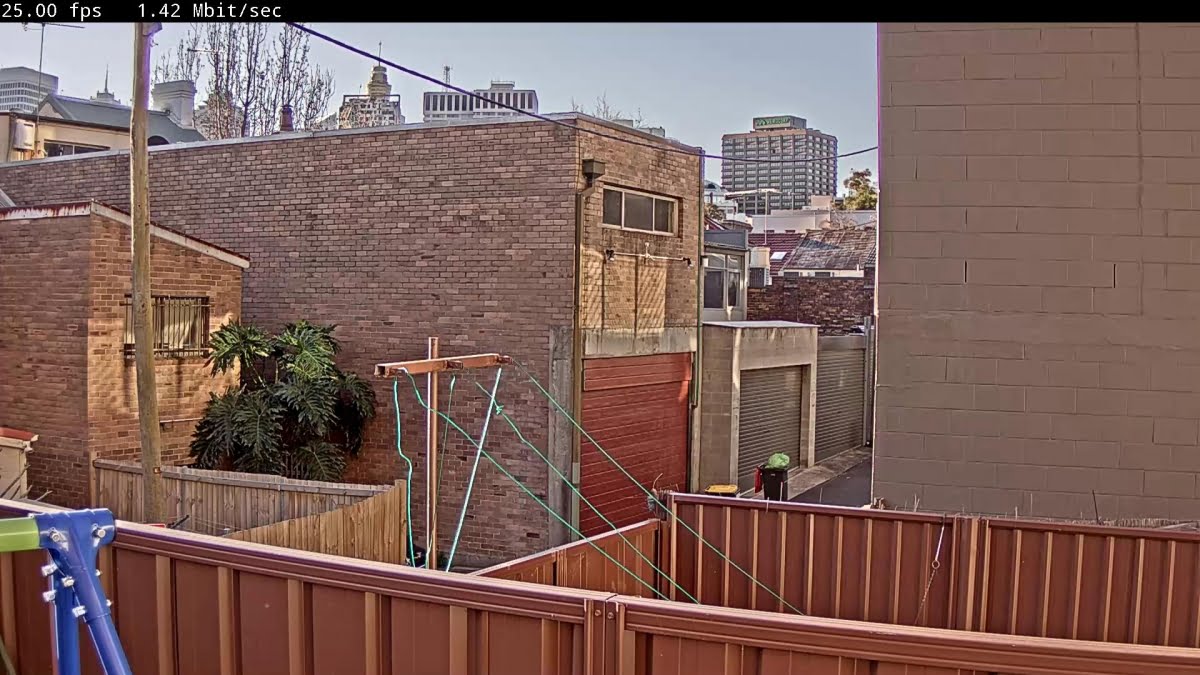
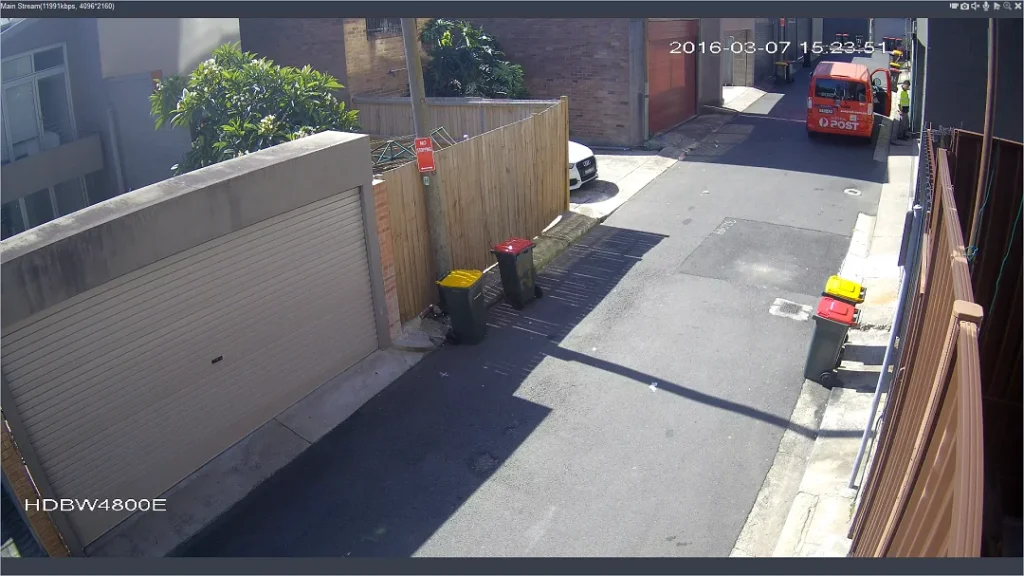
The tightness of the scene with the longer 15mm focal length evidences itself in a number of ways – not just in the sense that I’m only looking at the place people and vehicles ever move out here. Longer focal lengths make for flatter images. There’s no barrel distortion – I later confirm this by pointing the camera at a nearby block wall. No distortion means sharper images. And another important point is that I’m able to frame out irrelevant moving objects like trees and shrubs that contribute to elevated bitrates. Now, here’s the lane at 15mm with the Fujinon…
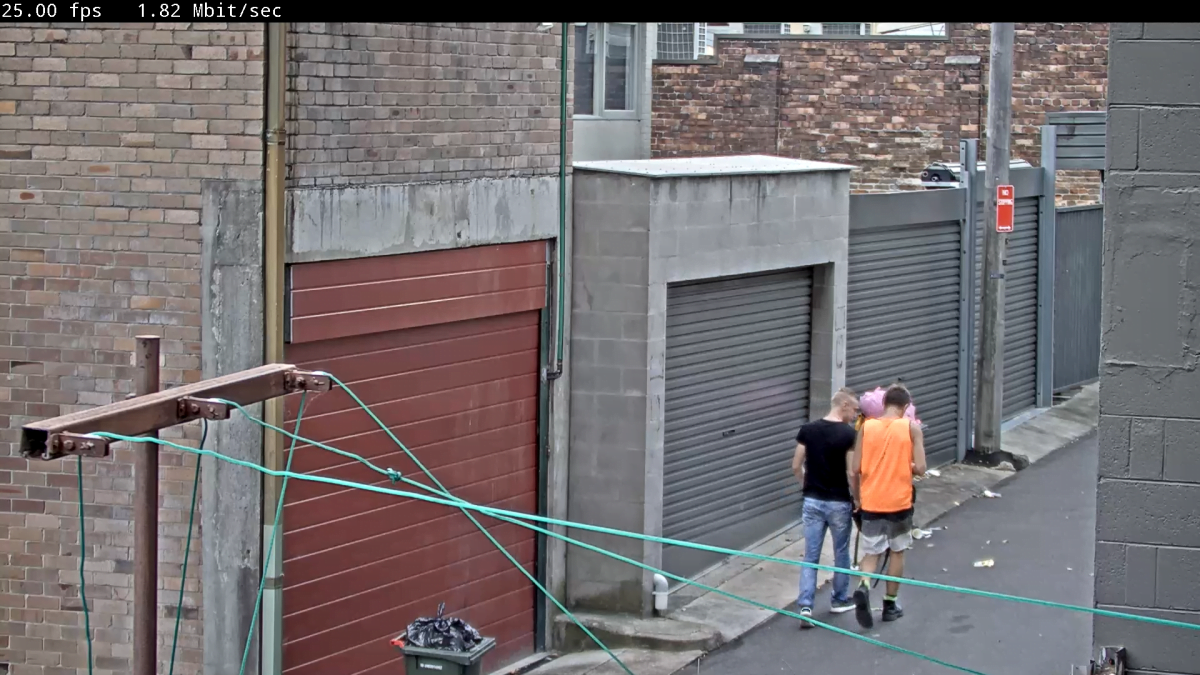
Fujinon 15-50mm F1.5-Colour Rendition
But it’s when people and vehicles start moving around in the lane that the impact of lens choice really hits home. Instead of getting situational awareness over a huge area that melts upon zooming digitally into my zone of operational priority, this narrow field of view is giving huge levels of detail right where it’s needed. I have court-admissible face recognition, clear number plates and great colour rendition to boot.

Each time someone walks the lane it’s brought home yet again that high quality image streams are all about lens choice – from an operational perspective you need to think long and hard about angle of view and focal length. Camera cost and some aspects of camera quality (not the camera system itself, mind), are secondary. The image is so good with this very affordable camera-lens combination I only save snapshots of people walking away from the lens. The front-on views I’m snaring are an invasion of privacy.
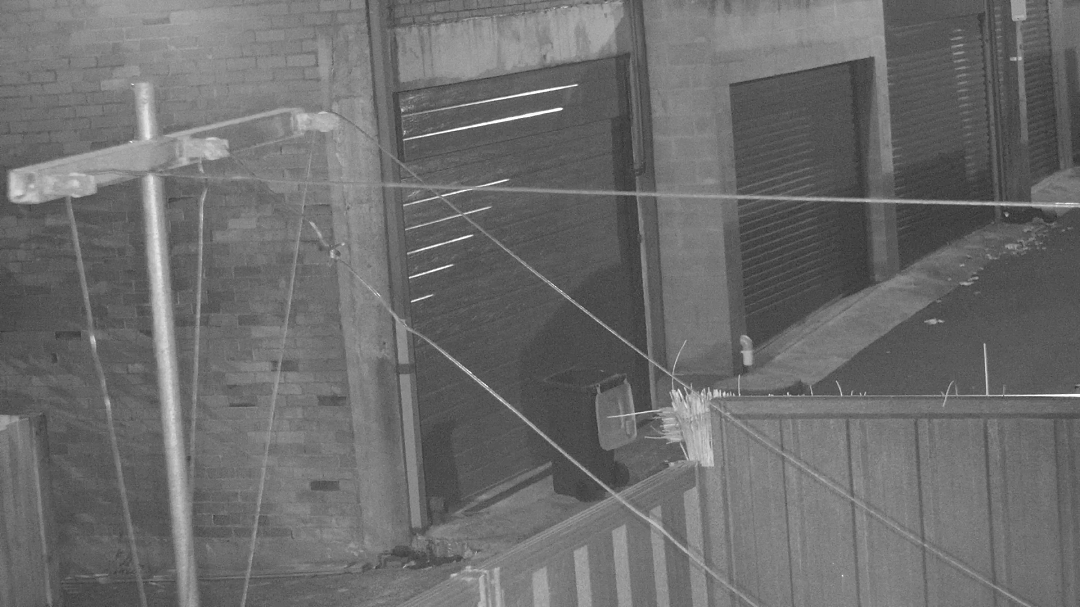
Something worth wondering about is how this camera system performs at night and I run the test until there’s sub-2 lux at the lens in order to check out low light performance with the F1.6 Fujinon. Once again, performance is a revelation. Look at the crop from the original image at 5mm with the Ricom…
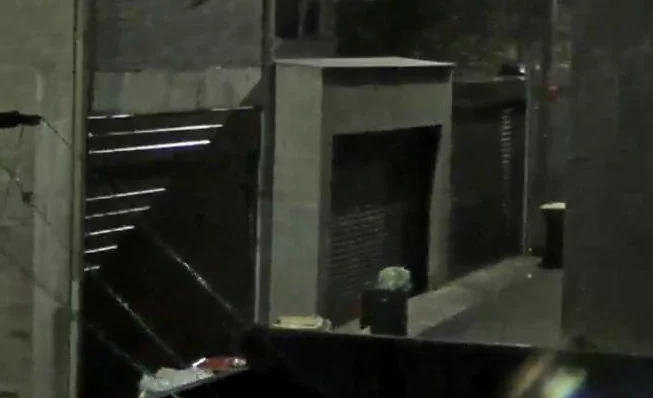
Fujinon 15-50mm F1.5-Look how the 15mm focal length of the Fujinon allows me to concentrate detail while framing out dark areas and focusing on a pool of light in the lane. Conveniently, there’s a movement sensor floodlight right above my target area, which is cheating but clearly shows the benefits of exploiting movement-activated or incidental ambient lighting at key points in your scenes. In any case, face recognition at night is a snap. Bitrate is higher at longer focal lengths when subjects fill more of the frame.
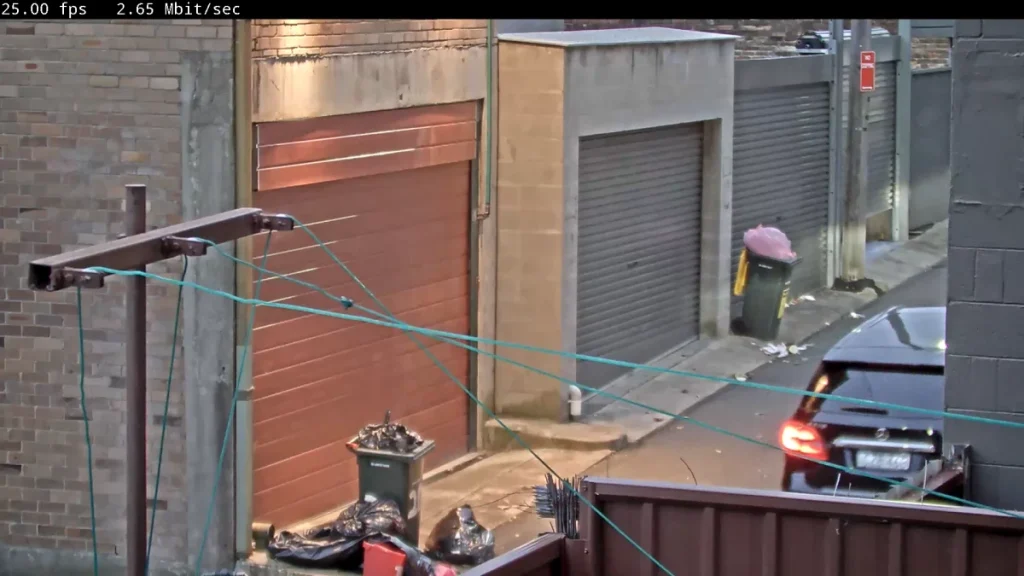
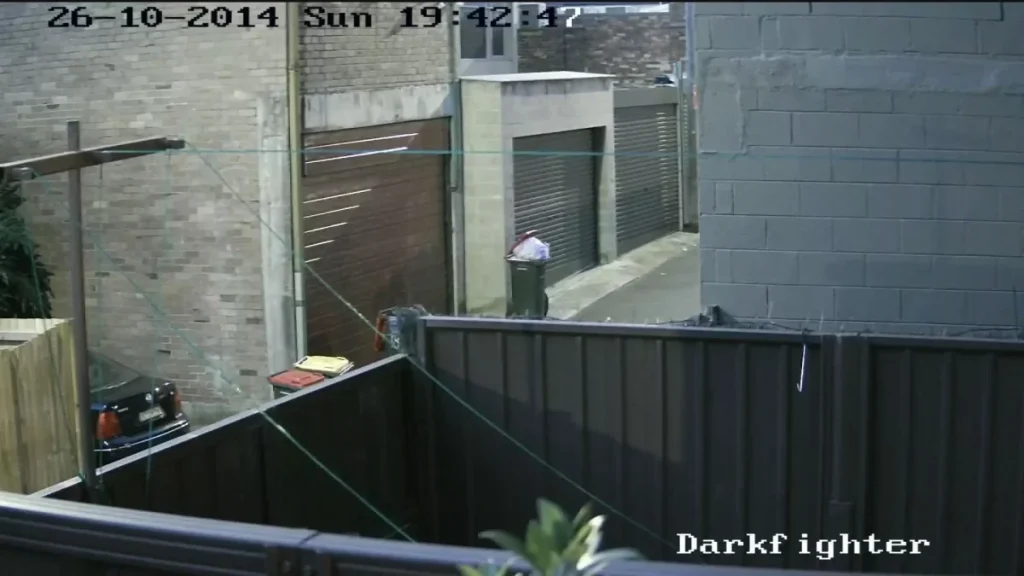
And what about LPR at typical street and industrial driveway speeds between 30-50kmph? In good light, Fujinon 15-50mm F1.5-performance is great with this camera at this focal length and I can’t see any motion blur, nor can I see any halo effect caused by the challenge of rendering adjacent high contrast areas getting on top of processing capability. I’m not certain I nailed the focus with this part of the application as I’m testing a few weeks after the original test – tightening the drag screw caused focus to stray a little. Nevertheless, there’s no trouble with plates between 30-50 with this combo.
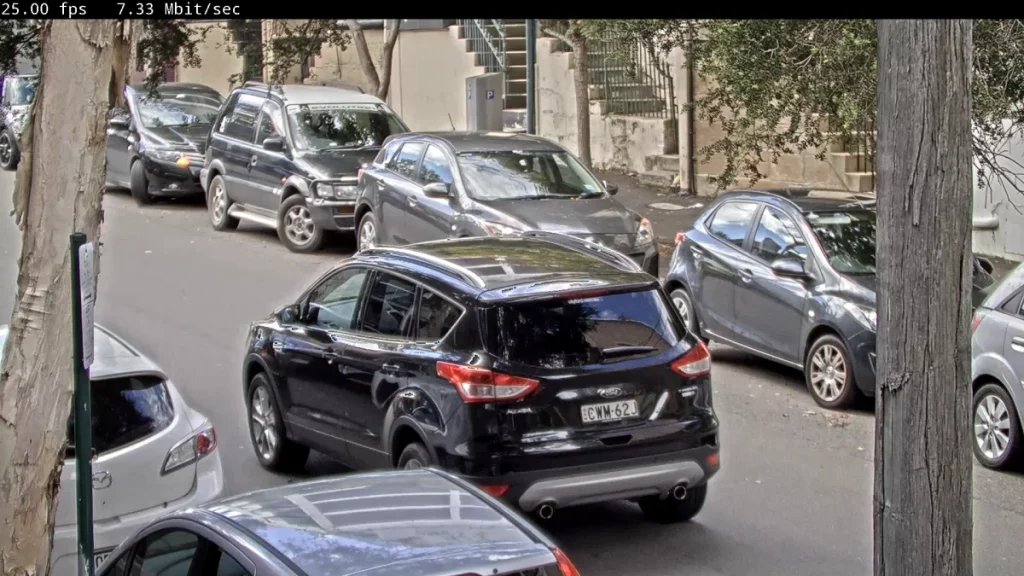
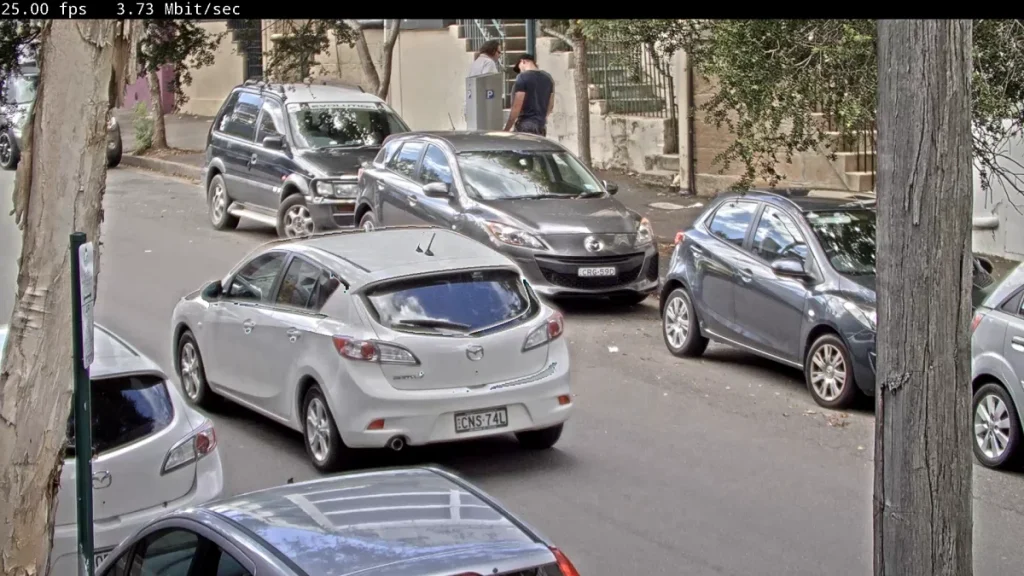
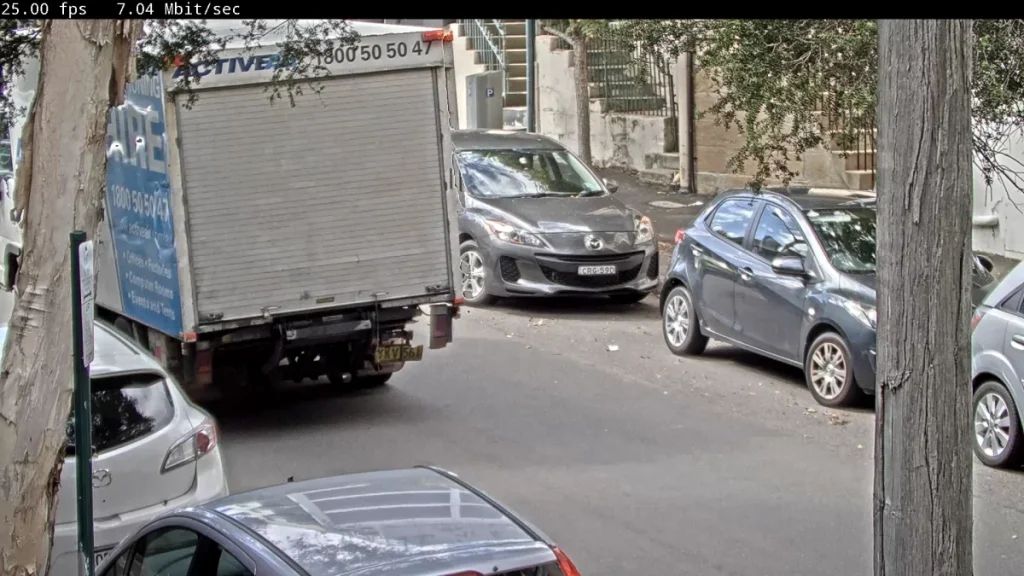
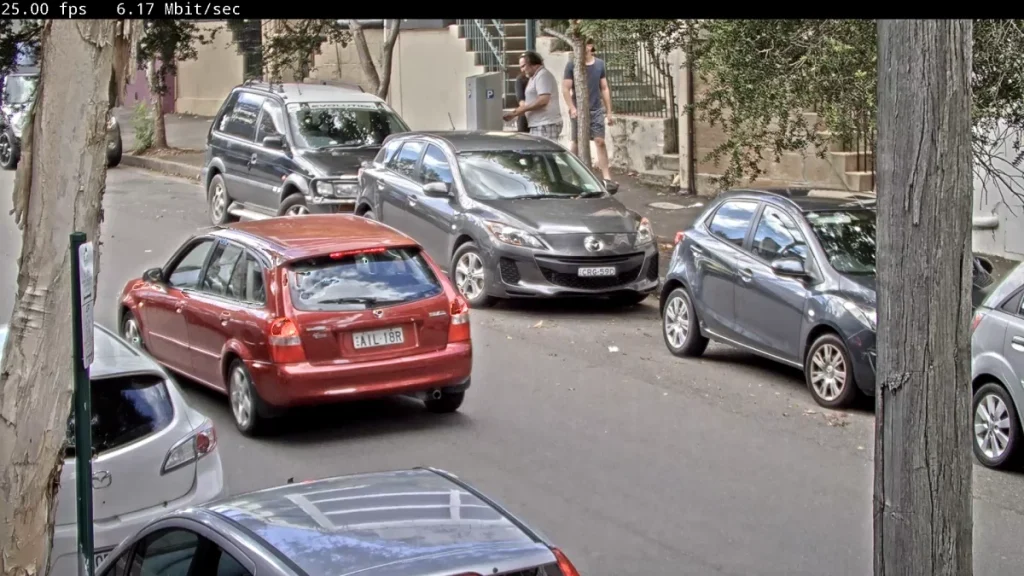
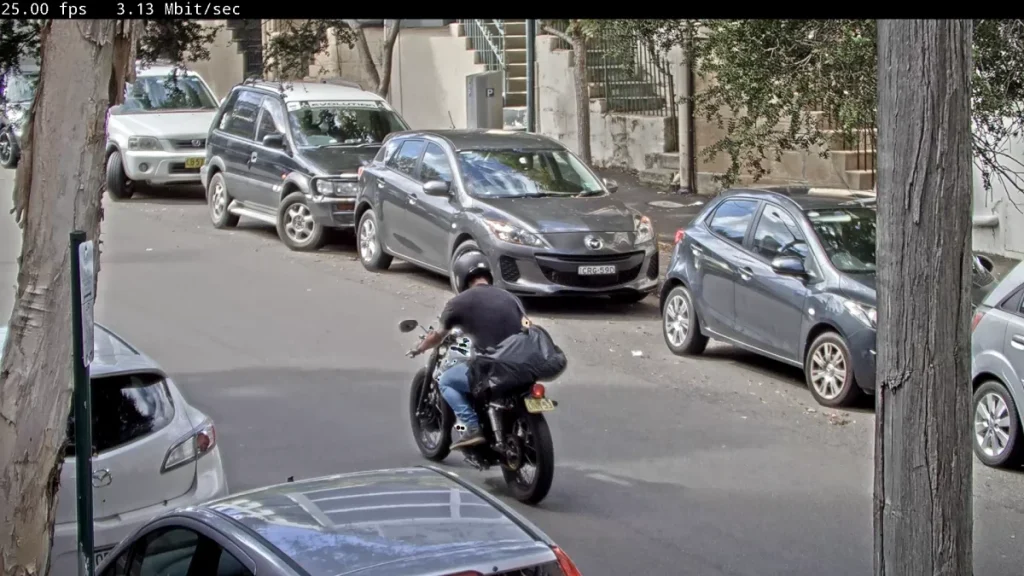
Late afternoon I nab a couple of images in much lower light. Performance in terms of snaring plates is great but I had to go into Setup and move the slider from Low Noise across to Motion Blur so as to ensure I got the quicker shutter speed and the elevated ISO that came along with it. The first image of this group was before I moved the slider – shutter speed had slowed down.

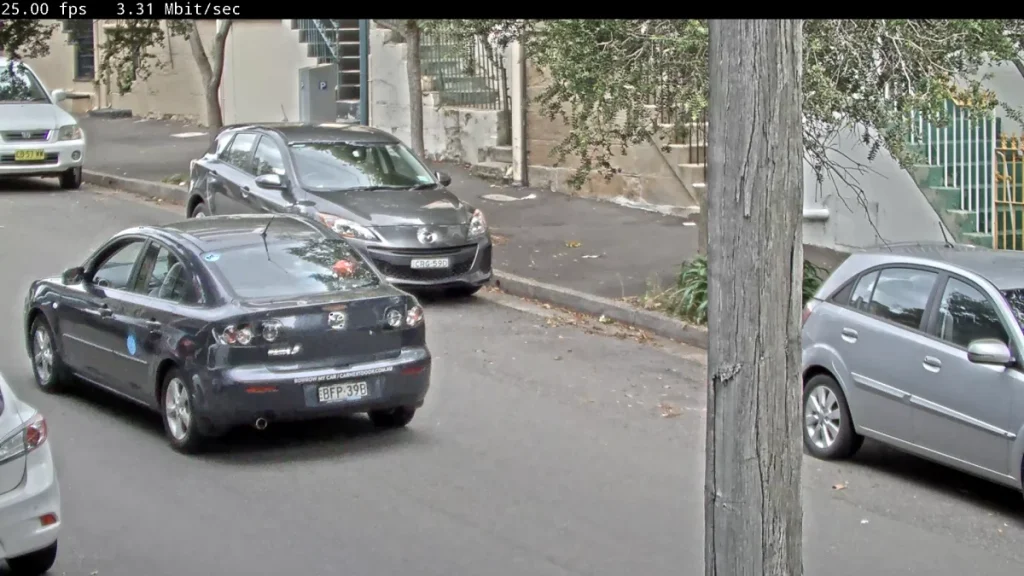
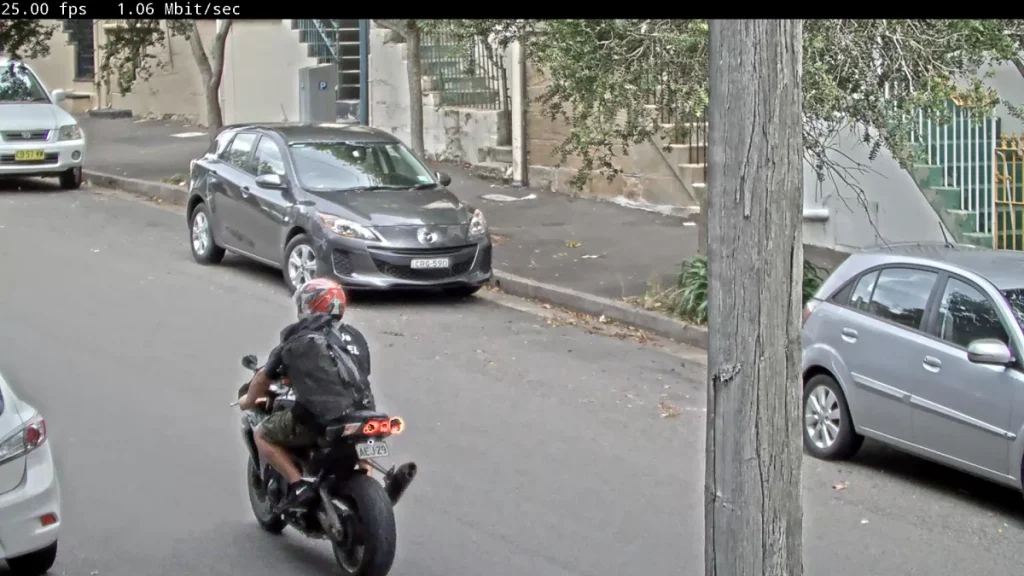
Fujinon 15-50mm F1.5-Motion Blur
Fujinon 15-50mm F1.5-Having gone to all the trouble with motion blur in the day and afternoon, I come back to the office to run the M1125 and Fujinon 15-50 in full dark – I measure variously 4 lux, 6 lux, 7 lux across the street before the test. Now, LPR of license plates at night at speeds of 30-50kmph is hard going – usually it takes high speed cameras and IR illuminators. As a result, I’m pretty certain I won’t get license plate recognition of moving cars on the street. Let’s see.
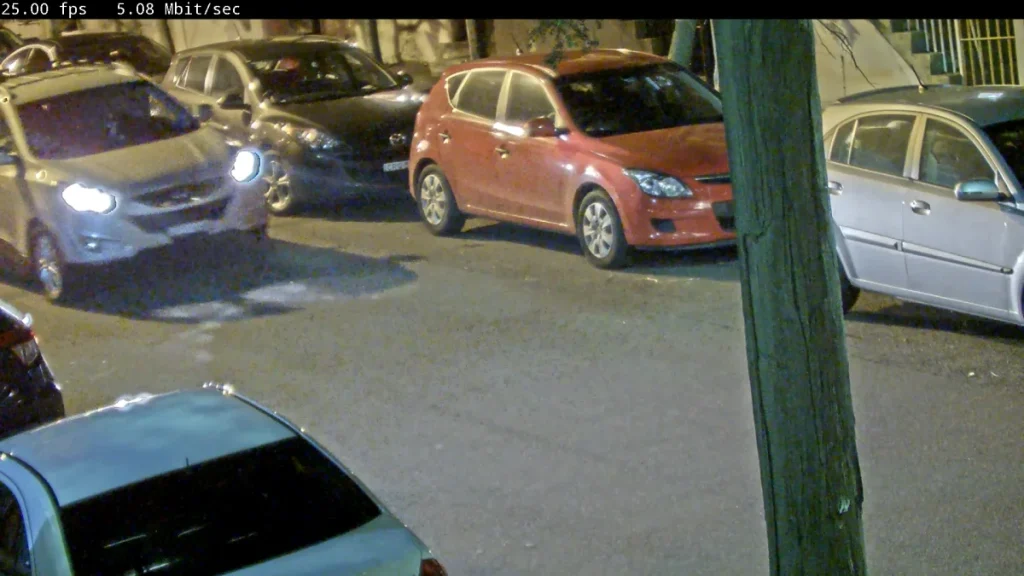
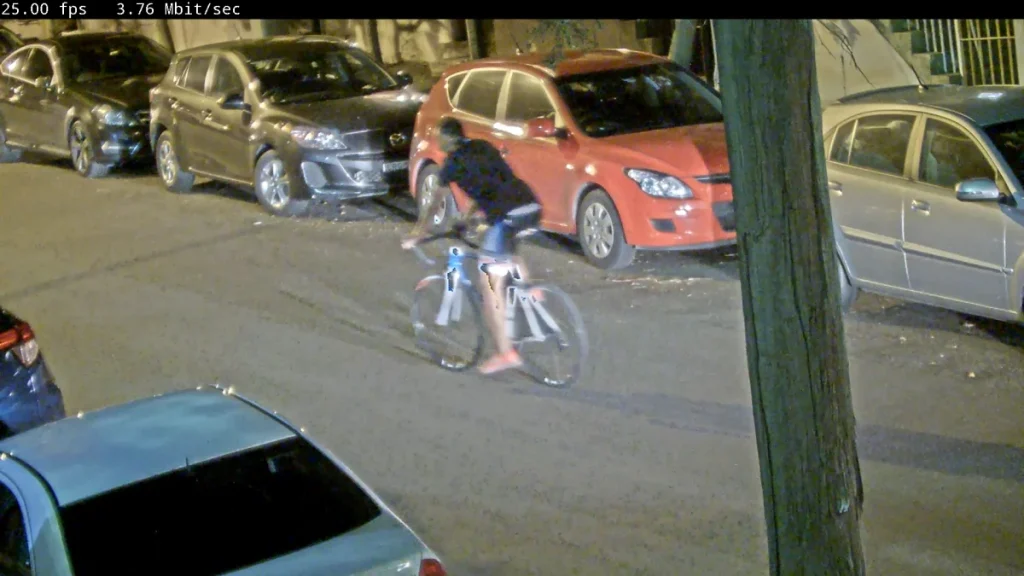
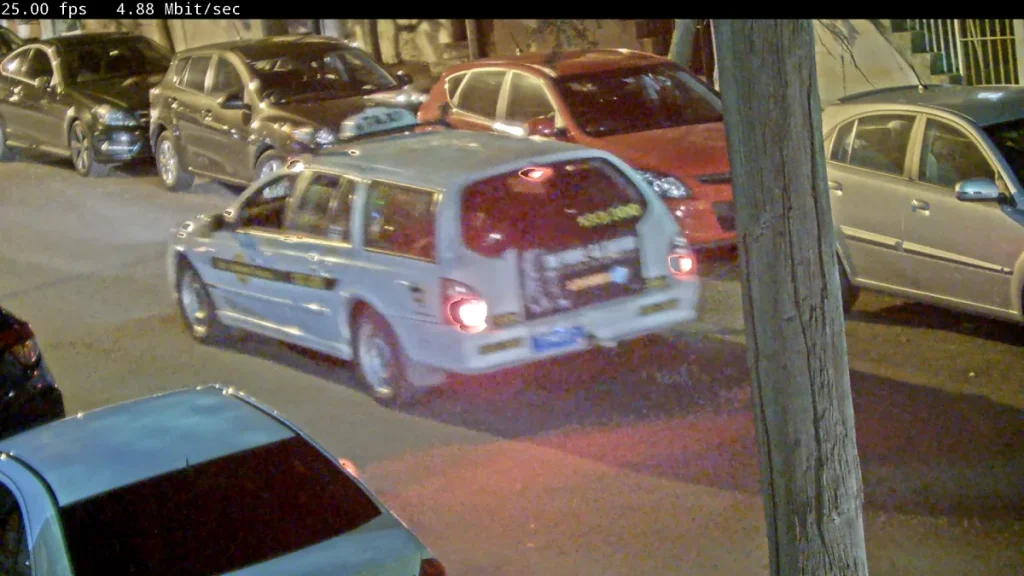
It’s not easy being an installer or integrator right now. End user choices are too often governed by price and it’s the rare security manager who can convince bean counters of the importance of bolting a CCTV solution’s capabilities to operational procedures. Senior management wants overall coverage of an area and often won’t worry if motion blur or a wide angle of view renders people in most parts of the scene unrecognisable as long as something is being recorded. Performance! Don’t make the accountants laugh! Today, camera choice usually comes down to the closest 3 all-rounder-style camera/integrated lens combos – jacks of all trades and masters of none. And once camera selection has narrowed, the screws are applied to price.
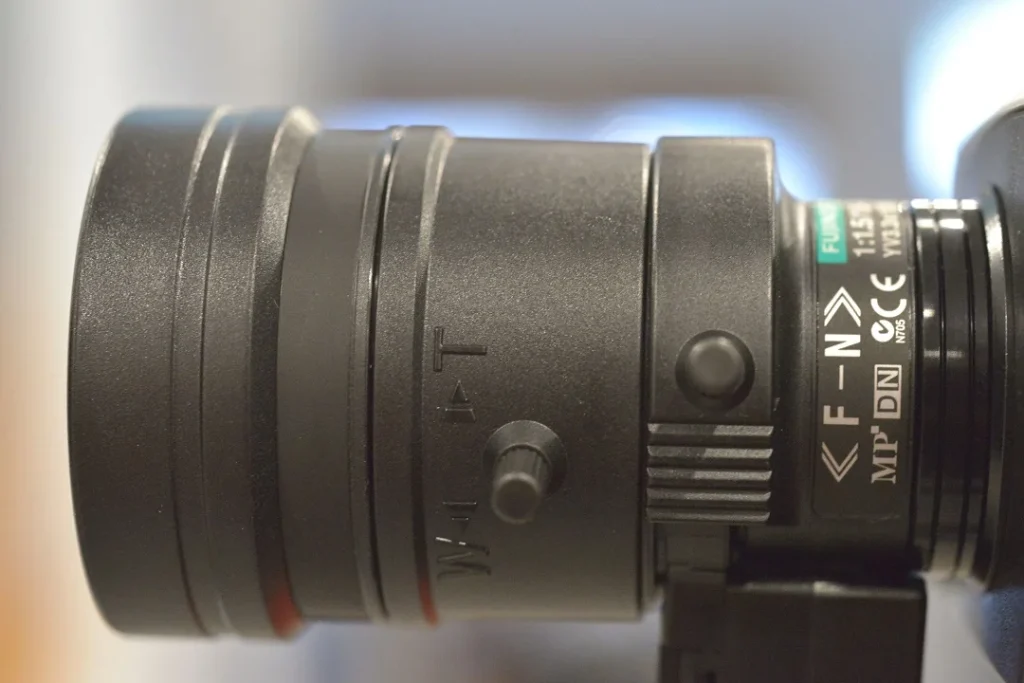
Yes, price can be a factor. But its also the factor that renders many camera systems useless for serious investigative work. Getting worthwhile images from a video surveillance solution is not about hanging a low cost wide angle CCTV camera on any adjacent wall. When it comes to investigating crime, performance does count. But even though pixels speak louder than words that needn’t always mean installing the most expensive cameras with the highest resolution sensors. Affordable cameras, like this Axis M1125, can be empowered using quality lenses and longer focal lengths to concentrate maximum sensor resolution in a way that utterly changes overall performance parameters. Try it and see.♦
More camera and product review here.
By John Adams
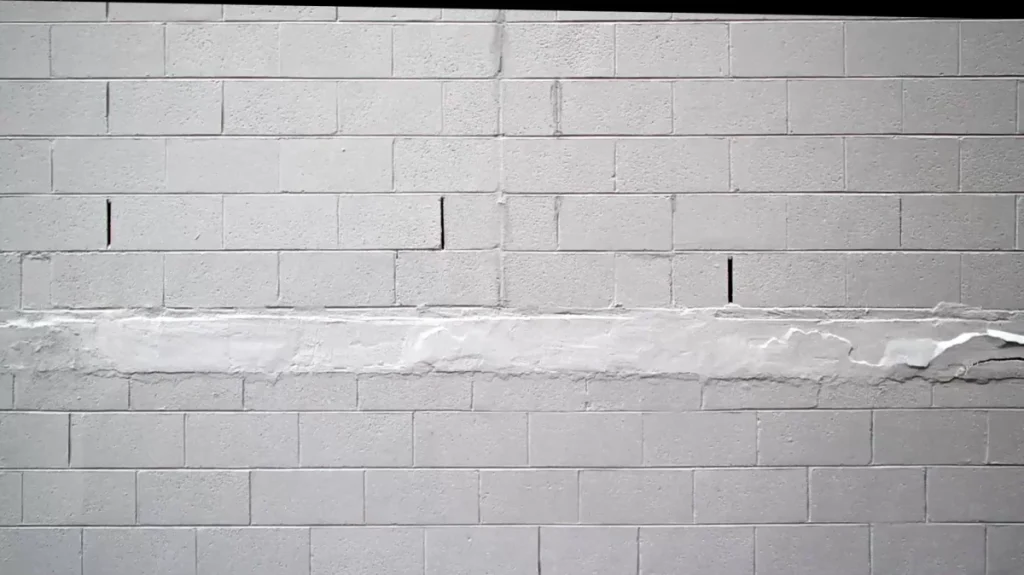
No extravagant distortion at 15mm – take into account my ball head framing is off as you can see at the top right of this crop. I can almost imagine 1.5-2 per cent moustache. Less distortion means more sharpness…




